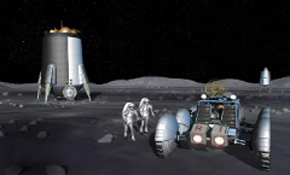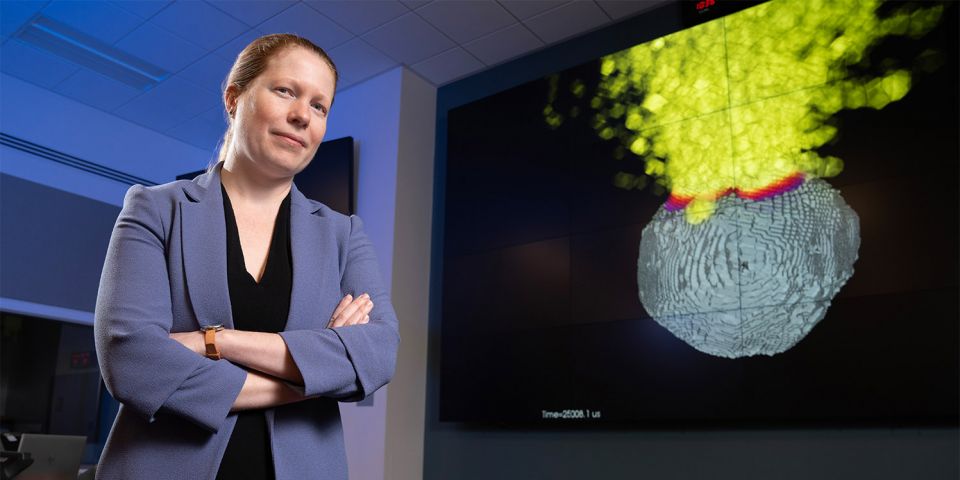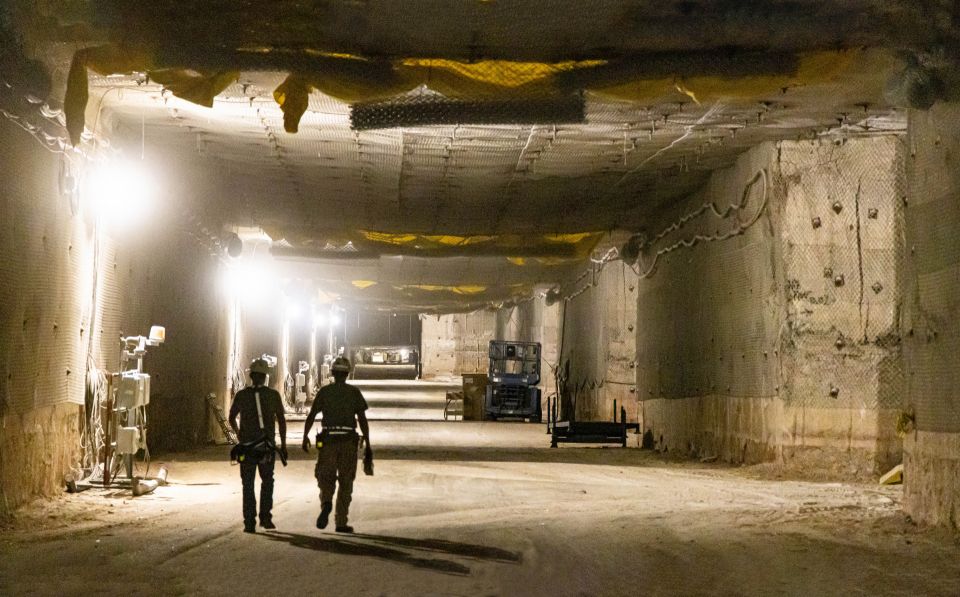NETS 2011 Lifts off in Albuquerque
This article was originally scheduled to appear on March 14.
The 2011 Nuclear and Emerging Technologies for Space meeting in February was by all accounts a great success. A total of 190 registrants attended, distributed almost evenly among NASA, the Department of Energy/national laboratories, industry, and universities. Conference participants were pleased to once again have a venue for discussing and publishing the latest research and development in space nuclear technologies and the exploration missions enabled by those technologies.
The efforts of General Chair Shannon Bragg-Sitton of the DOE's Idaho National Laboratory, and General Co-Chair Michael Houts of NASA Marshall Space Flight Center, in initiating and organizing this conference resulted in a very important stepping stone toward major new advances in space exploration.
Opening Plenary
The NETS-2011 Opening Plenary welcomed a highly distinguished panel of speakers to discuss historical space nuclear programs, current programs (and currently desired programs), and how to make these more successful in light of budget constraints, public perception, politics, and policy. Harry Finger's opening presentation outlined successful developments in nuclear rocket propulsion in the 1960s, so that by 1970 detailed planning of human exploration of Mars had become possible. That development was cut short, but NETS-2011 will serve as a stimulus to move forward in those areas.
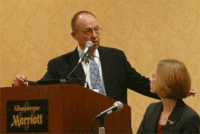
Casani
John Casani of NASA Jet Propulstion Laboratory, and then James Adams of NASA headquarters, discussed potential and current mission applications for space nuclear systems. Robert Lange of the DOE presented developments in radioisotope power generation, a critical power source for exploration of the solar system. Michael Griffin, former NASA administrator, concluded the opening plenary by presenting viable development strategies for space fission power and propulsion. These presentations and session summaries can be found at the NETS-2011 meeting website.
Meeting Chair Bragg-Sitton received numerous enthusiastic comments from those attending the plenary sessions. Attendee Don Palac, lead for the Fission Surface Power Program at NASA Glenn Research Center, commented this was the best plenary he had seen in 10 years.
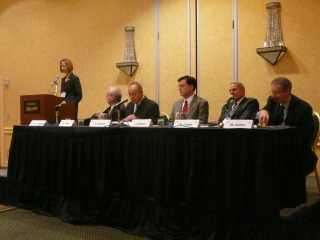
Opening plenary panel
Special Session on Politics, Policy, Non-Technical Challenges
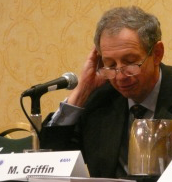
Griffin
Griffin and moderator Elizabeth Newton asked panelists in a special session to discuss the non-technical challenges of developing space nuclear technology. "The US space program has enjoyed little stability in space-related policy over the years, and this fluctuation in space program goals can wreak havoc on our attempts to complete a program," commented Newton to start the session.
Chuck Atkins, retired chief of staff for the U.S. House of Representatives Committee on Science and Technology, noted the non-technical challenges faced by space nuclear technology are far greater than the technical ones. An example cited by Atkins is that while a Congressional committee might authorize program spending in a certain area, a program is not funded unless an appropriation is made by another committee. Differences are frequent among committees, between the House and Senate, between the administration and Congress, among various stakeholders within the space program, sometimes within the space nuclear community itself. As long-term programs must survive the entire budgeting process each year, Atkins advocated crafting a long-term nuclear space policy, along with efforts toward longer-term authorizations and appropriations.
Griffin stated the policy timelines in Washington do not correspond to programmatic timelines-combining two challenging technologies such as space travel and fission power takes more time than it takes for an administration to turn over. Griffin asserted the stakeholders in the space nuclear community need to come together to help form a strategic policy to carry space exploration "to the next level." Bragg-Sitton: "This policy session inspired numerous questions and insightful discussions with the audience, and I urge readers to explore the complete session summary at the NETS-2011 website."

Special session panel
Technical Sessions
Numerous technical sessions were held, exploring the most advanced research and development in nuclear technologies for space propulsion and power, surface power, radiation mitigation, and many other related fields. Detailed meeting topics and abstracts of presented papers can be found here.

Exhibit Hall
Opening Dinner with Dr. Glen Schmidt
The opening dinner at NETS-2011 featured a keynote address by Glen Schmidt, test engineer for SNAP-10a-the only fission reactor the United States has flown in space. SNAP-10a overcame many significant engineering challenges on the way to mission success. "I believe we need to take a close look at past programs to understand both how and why things were done a certain way as we endeavor to get a fission system to a flight program once again," said Bragg-Sitton. "We can certainly learn from such a successful flight program."
Evening at National Museum of Nuclear Science and History
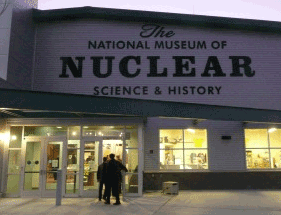
National Museum of Nuclear Science and History
At another special evening event, conference participants were treated to a presentation by Harrison "Jack" Schmitt, former U.S. Senator for New Mexico and Apollo 17 astronaut-the last man (and the only scientist) to walk on the moon. "Hearing Dr. Schmitt's reflections about the Apollo program and why there might be reason to return to the moon was truly inspiring," said Bragg-Sitton. "So few people have had the opportunity to gain this first-hand perspective-Dr. Schmitt's discussion was truly insightful and inspiring."
The NETS organizing committee is currently planning NETS-2012. Check the NETS meeting website for more details.
If you would like to be added to a mailing list to receive notification of future NETS meetings, please send email to NETSconf@gmail.com.
_________________________________
Paul Bowersox is a space exploration enthusiast and freelance writer who holds a master's degree in science policy.
He is a regular contributor to the ANS Nuclear Cafe.


